We can use coupled LC circuit to understand the normal modes of coupled oscillators of a lattice.
We are using this to get the dispersion relation of the angular frequency for the oscillation.
Background

simulate this circuit – Schematic created using CircuitLab
Suppose we have N coupled LC oscillators. In the above diagram, we assume in the loops the current is flowing in counter clockwise direction and the upper plate of the capacitor is positively charged and lower plate is negatively chaged.
KVL equation for the \$j-th\$ loop is
\$L\frac{dI_j}{dt}=-\frac{q_j}{C}+\frac{q_{j-1}}{C}\tag{1}\$
As, \$\frac{dq_j}{dt}=I_j-I_{j+1}\$ and \$\frac{dq_{j-1}}{dt}=I_{j-1}-I_j\$
Differentiating \$(1)\$ with \$t\$, we get
\$L\frac{d^2I_j}{dt^2}=-\frac{I_j-I_{j+1}}{C}+\frac{I_{j-1}-I_j}{C}\tag{2}\$
\$\implies \frac{d^2I_j}{dt^2}=-(-\omega_o^2I_{j-1}+2\omega_o^2I_j-\omega_o^2I_{j+1})\tag{3}\$
If we can consider infinite number of coupled oscillators then the matrix associated with the equation will become circulant and the Fourier transform matrix can diagonalize it. But in that case all the frequencies will be allowed.
To get back the case of n-coupled oscillators from infinite oscillators, we have to impose the boundary condition that \$I_o=I_{N+1}=0\$. This leads to the restriction on the oscillation frequency.
We will get the following result,
\$I_{j,m}=\mathbb{Re}(\Big(\sin\Big(j\frac{m\pi}{N+1}\Big)e^{i\omega_mt}\Big)\tag{4}\$
\$\omega_m^2=\frac{2}{LC}\Big(1-\cos\big(\frac{m\pi}{N+1}\big)\Big)=\frac{2}{LC}\Big(1-\cos\theta_m\Big)\tag{5}\$
where \$m=1,2,...,N\$ are the N normal modes of the oscillators.
Some normal modes for \$N=4\$

On y-axis is current and x-axis is position of the each oscillator.
We can see that for each circuit current becomes maximum at the same time, so the phase difference between any can be either \$0\$ or \$\pi\$.
This analysis is clear to me.
Experiment
In the experiment, we have a kit in which we can change the frequency of input voltage to the N coupled LC oscillator. The output of the kit is connected to the oscilloscope (operated in XY mode). In oscilloscope, we get Lissajous figure (which gives the phase difference between the input and output voltage).
In manual it is written that
The transmission line consists of ten sections and it is excited by constant source (audio oscillator is series with resistance R1). To eliminate the reflected wave and thus to simulate an infinite line, the line should be terminated by the resistance equal in valve to the characterisitc impedance \$\sqrt{L/C}\$.
So, we are recording phase difference between input and output signal (of the multiples of \$90^o\$) in the oscilloscope for the associated input frequency.
Doubts
(i) When we plot frequency as a function of phase difference between and output voltage then we found that it satisfies \$(5)\$ and by fitting it we get the value for \$LC\$ to a good accuracy. I am not able to understand how this phase difference corresponds to the angle given in \$(5)\$. Basically the input signal excites the normal mode when its frequency is equal to the normal mode frequency. The \$\theta_m\$ is the characteristic of the normal mode. But can somebody explain how the angle \$\theta_m\$ in the \$(5)\$, corresponds to the phase difference between input and output signal? And how it is always the multiple of \$90^o\$?
(ii) I am not able to understand the logic behind using \$R_2\$. It has been said that we have to make \$R_2=\sqrt{L/C}\$, to eliminate reflected wave and simulate infinite line. I am not able to understand what does it mean.
I am a physics student, I am familiar with the basic high school electronics, so please explain accordingly.

